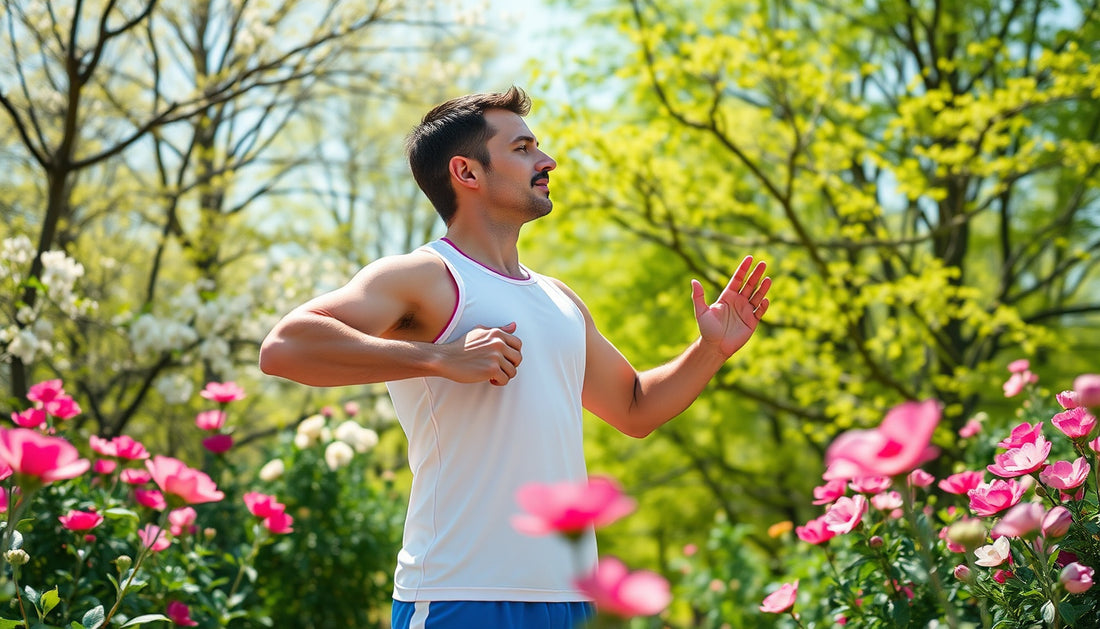
Breathe Easy: Mastering Lung Training Techniques for Peak Performance in Spring Sports
Share

As spring breathes new life into the world, athletes gear up for their season of outdoor vigor. From runners to cyclists, soccer players to baseball enthusiasts, unparalleled endurance and oxygen efficiency spell the difference between good performance and peak results. But have you ever considered that strengthening your lungs might be the secret weapon in your training arsenal?
Why Focus on Lung Training for Spring Sports?
The lungs are your body's gateway for oxygen—the fuel your muscles need to perform optimally. Unlike general aerobic training, targeted lung training can amplify oxygen uptake, delay fatigue, and speed up recovery. This is especially critical during spring sports when outdoor conditions might fluctuate, challenging your respiratory system in new ways.
Consider what Dr. Emily Carson, a renowned sports physiologist, emphasizes: “Most athletes overlook the capacity of their respiratory muscles, but improving lung function directly correlates with enhanced endurance and efficiency.”
Key Benefits of Lung Training
- Increased oxygen intake and utilization efficiency
- Enhanced respiratory muscle strength and endurance
- Reduced breathlessness during high-intensity activities
- Improved recovery times post-exercise
- Greater ability to perform in variable outdoor conditions
Understanding Lung Training Techniques
Lung training is not merely about breathing deeply; it’s a sophisticated approach to conditioning your respiratory system. Here are some proven techniques athletes can incorporate:
1. Diaphragmatic Breathing (Belly Breathing)
Focuses on strengthening the diaphragm, the primary muscle of respiration.
- How to practice: Inhale deeply through your nose, allowing your abdomen to expand, then exhale slowly through pursed lips.
- Benefits: Promotes efficient breathing, reduces work of breathing, and increases oxygen delivery.
2. Inspiratory Muscle Training (IMT)
Uses devices that create resistance during inhalation, forcing your respiratory muscles to work harder.
- Example devices: PowerBreathe, Ultrabreathe.
- Evidence: Studies show IMT leads to up to 15% improvement in VO2 max and delays muscle fatigue. Dr. Robert Hayes notes, “IMT has revolutionized how athletes build endurance without necessarily increasing training volume.”
3. Interval Breathing Exercises
Alternating periods of controlled shallow and deep breathing to simulate variable intensity.
- Method: Combine breath-holds with rapid inhalations; for instance, breathe in for 4 seconds, hold for 7, exhale for 8.
- Benefits: Enhances lung capacity and control over breathing patterns under stress.
4. Postural and Flexibility Training
Good posture opens the chest cavity, allowing lungs to expand fully.
- Exercises: Yoga, Pilates, and dynamic stretches targeting thoracic mobility.
- Impact: Allows you to breathe easier, produces more efficient lung ventilation during activity.
Integrating Lung Training into Your Spring Sports Regimen
- Warm-up routine: Begin with 5-10 minutes of diaphragmatic breathing to prime your lungs.
- During training: Use interval breathing techniques during rest or warm-down periods to sharpen breath control.
- Dedicated IMT sessions: 10-20 minutes daily, 3-5 times a week using inspiratory muscle trainers.
- Post-activity: Maintain flexibility and good posture to facilitate recovery.
The Science Speaks: Data to Breathe By
- VO2 max improvements: Regular inspiratory muscle training can boost VO2 max by 10-15%.
- Delay in breathlessness: Athletes report a 20% reduction in perception of breathlessness during high-intensity training after lung training.
- Enhanced recovery: Faster lactate clearance correlates with improved lung function.
Do you feel the difference when you run out of breath, or when your muscles scream for oxygen? Strengthening your lungs can be the game-changer you’ve been overlooking.
Passion Meets Performance
Every athlete dreams of pushing boundaries and exploring their true potential. But this journey requires more than strength and speed—it demands breathing with intention and power. Spring is the season of growth, renewal, and energy. Why not harness this spirit to optimize your respiratory system?
As outdoor lover and lung health advocate John Muir once said, “In every walk with nature one receives far more than he seeks.” Truly, every breath you take is a step toward better performance and deeper connection with your environment.
Take a Deep Breath and Take Action
Ready to start your journey toward peak respiratory performance? Begin today by incorporating lung training exercises into your routine, track your progress, and notice the difference in how you perform on the field, track, or trail. Remember, exceptional athleticism starts with exceptional breathing.
Breathe easy, train smart, and let your lungs lead you to new personal bests this spring!
Do you have a favorite lung training technique or personal experience with respiratory conditioning? Share your story or questions below—we'd love to hear from you!






